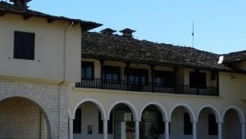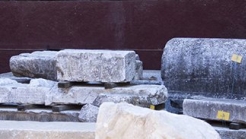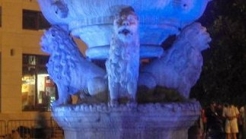

Greece
Τhe report of the Archaeological Museum Rethymno include items from various excavations and give a timeless image of cultural history of the country from the Neolithic period to the years of Roman occupancy.
The collections include:
- Findings from late neolithic (3500 – 2900 B.C. ) and early minoan (2800 – 2100 b.c. ) years from the caves Geranium, Melidonioy, Margelon and Εlenon.
- Findings minoan era (2100 – 1600 BC) from the building blocks of Apodoyloy, Monastiraki and the holy peak in Βrisina.
-Findings late minoan era (1600 – 1100 BC) of the cemeteries in the region. Representative is the cemetery of Kalyvon.
- Findings geometric (1000 – 700 B.C. ) and archaic (700 – 500 B.C. ) years of Eleftherna and Axos.
- Findings classical, Hellenistic era and roman years from Stavromenos and Argyroupolis (Lappa).
One of the most important exhibits of the Museum are:
- Larnaca with imaging hunting scene from Armeni Ancient Necropolis of Kalyvon (1320 – 1200 BC).
- Figurine minoan goddess “ICU ‘ towering hands”from the Pagalochori (1320 – 1200 BC).
- Marble statue Aphrodite of Argyroupolis (1ST A.D. b.c. ).
- Marble figurine from Gerani cave (3600 – 3200 BC).
- Clay phantom temple from which survived the floor, from the Monastiraki (1800 – 1700 BC).
- Part Galindolowland phantom bank tenders with inscription in linear A writing, from the sacred summit Βrisina (1700 – 1600 BC).
- Ηθμοπυξίδα from Stavromenos. Clay ajar vessel with foot and cap. The bottom of it is pierced. Bear decor from continuous coils and plants. (1500 – 1450 BC).
- Head clay female figurine from Axos (around 530 B.C. ).
- Part of marble grave column from Stavromenos. Shown naked athlete with dog (about 460 B.C. ).


The Byzantine museum is located northeast of the Acropolis (Its-Kaleh) of the castle of Ioannina. It is a two storey building, on the ground floor of which the main exhibition is housed, comprising of findings (sculptures, coins, ceramics, pictures, bema doors, gospels) from the 4th to the 19th century.


The Tegea Archaeological Museum is a place where the visitor can enjoy works belonging to the highest inspiration times of ancient Greek sculpture.


Recently renovated mansion of Aktarika downtown and going to house the Vikelaia Library of Heraklion, a cultural institution with a great history which has justly been called "Academy of Sciences", as in previous years produced sufficient spiritual project in Humanities and the Arts .
1039 Ε 6061 01515 00